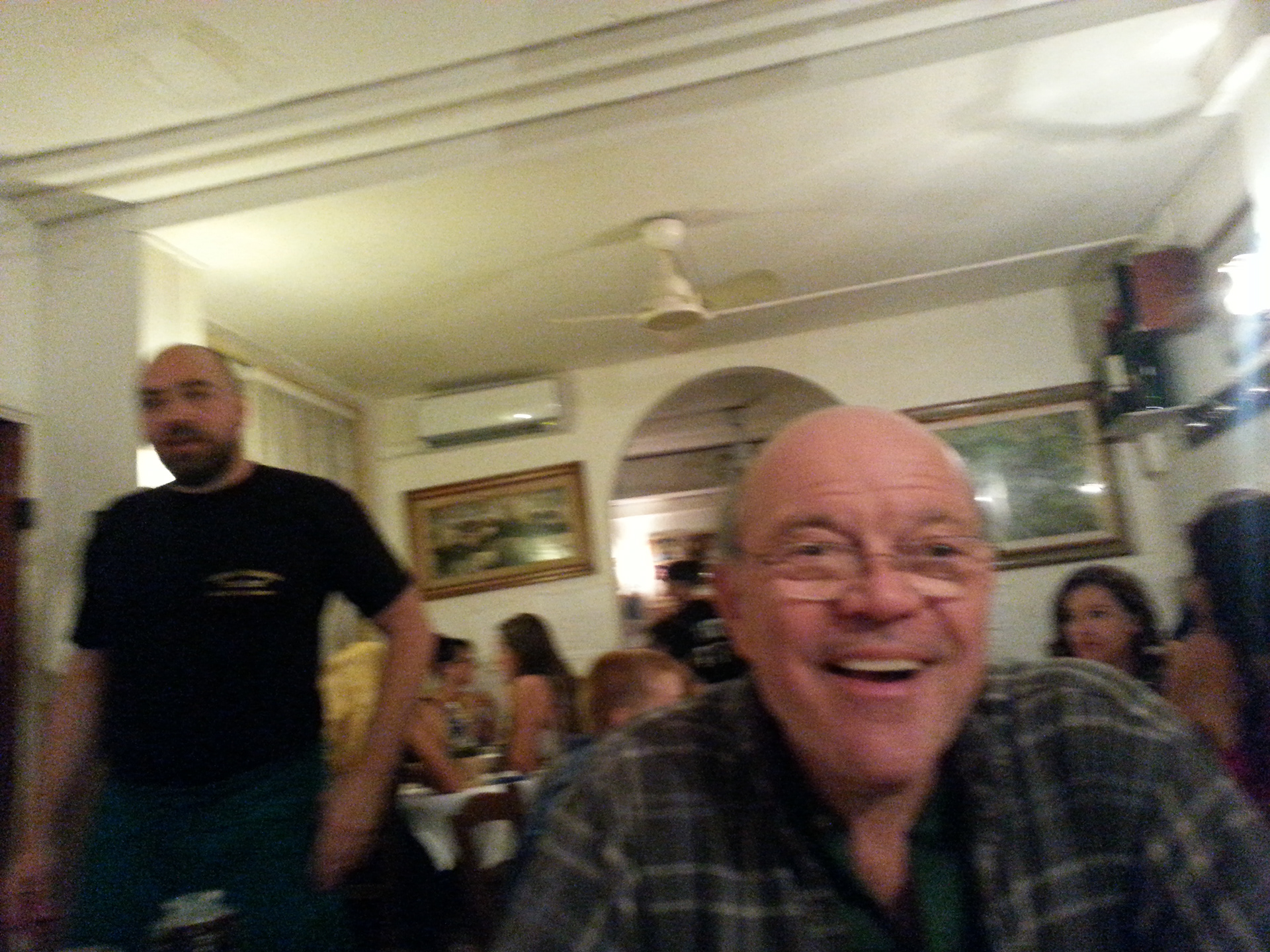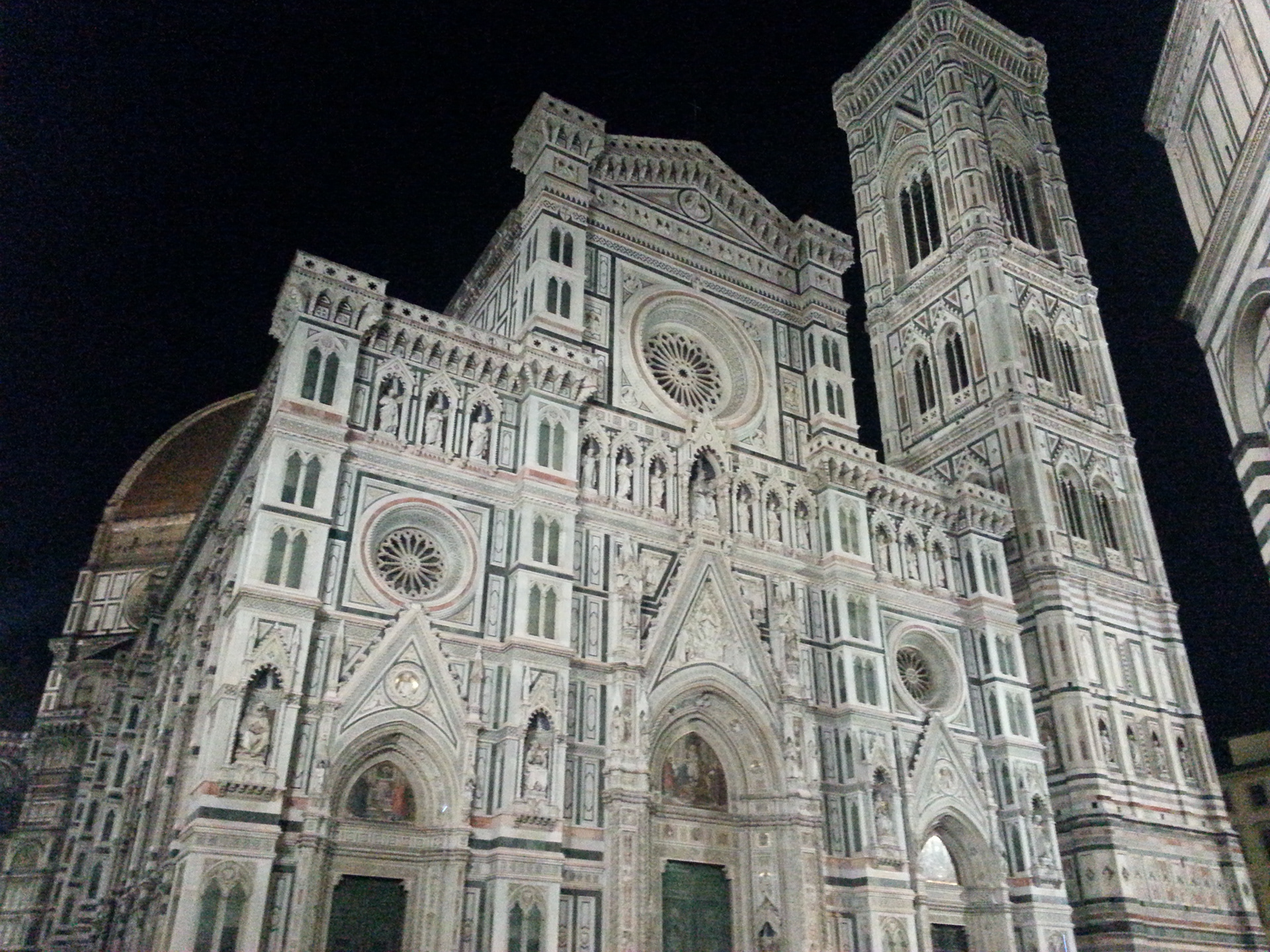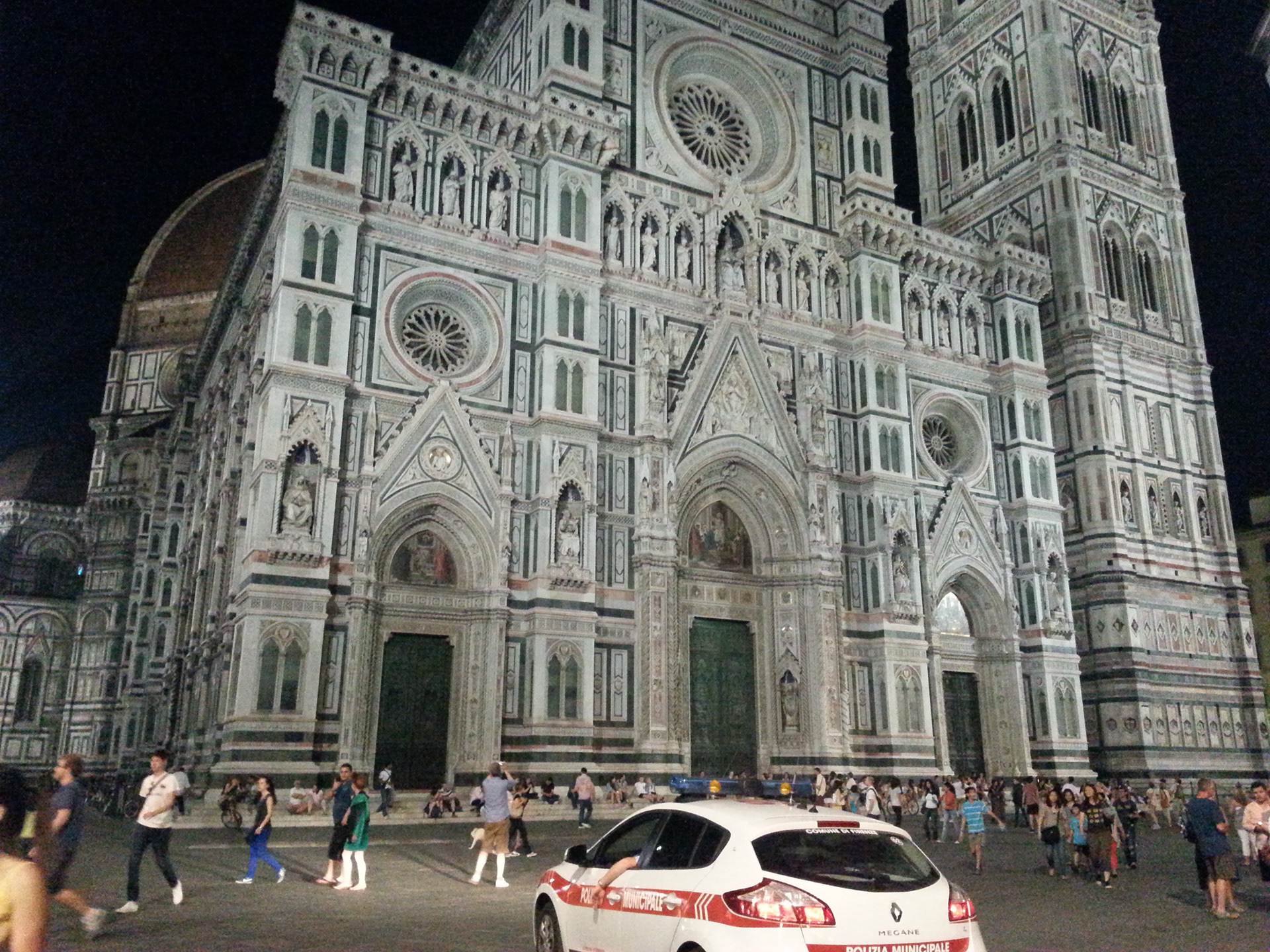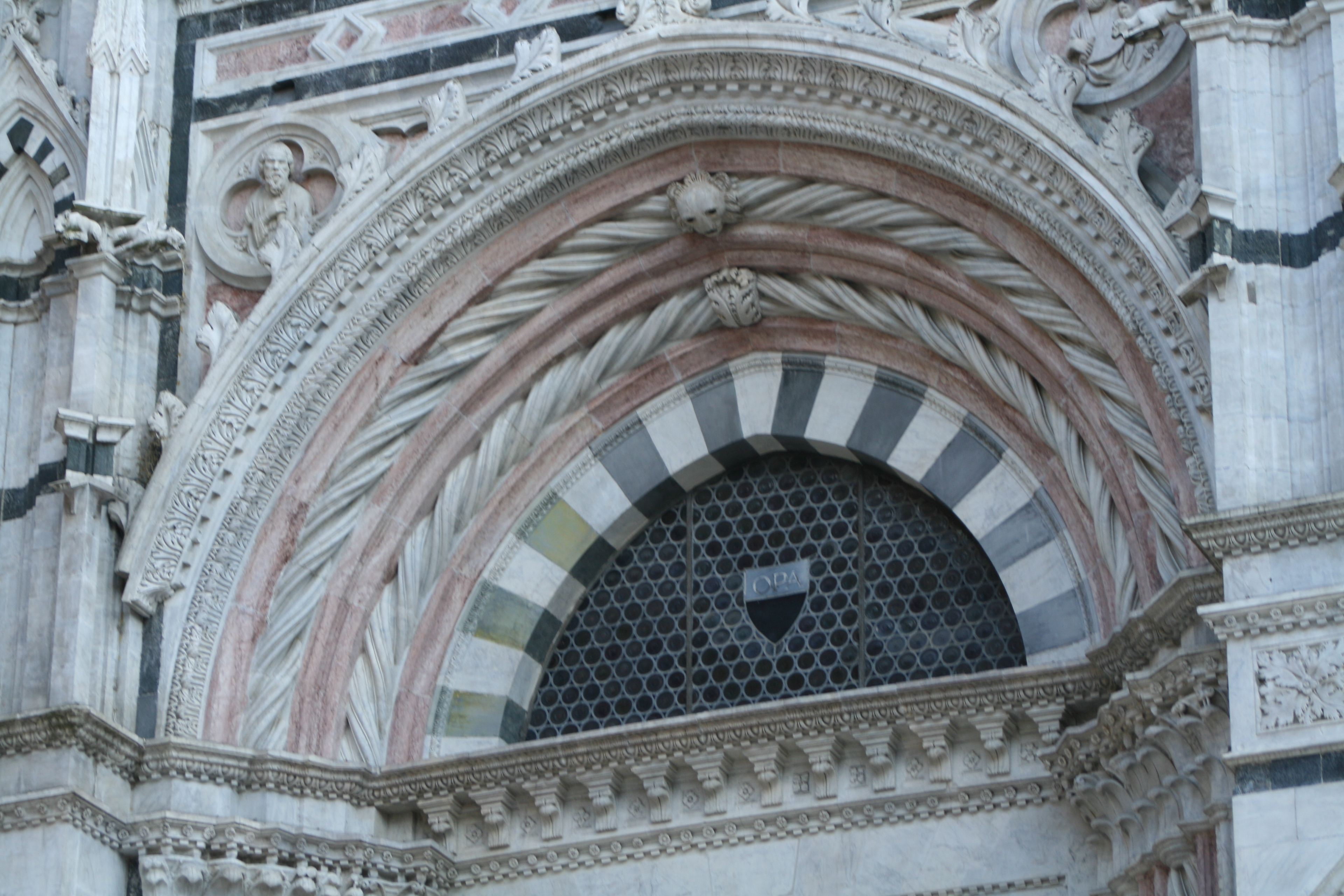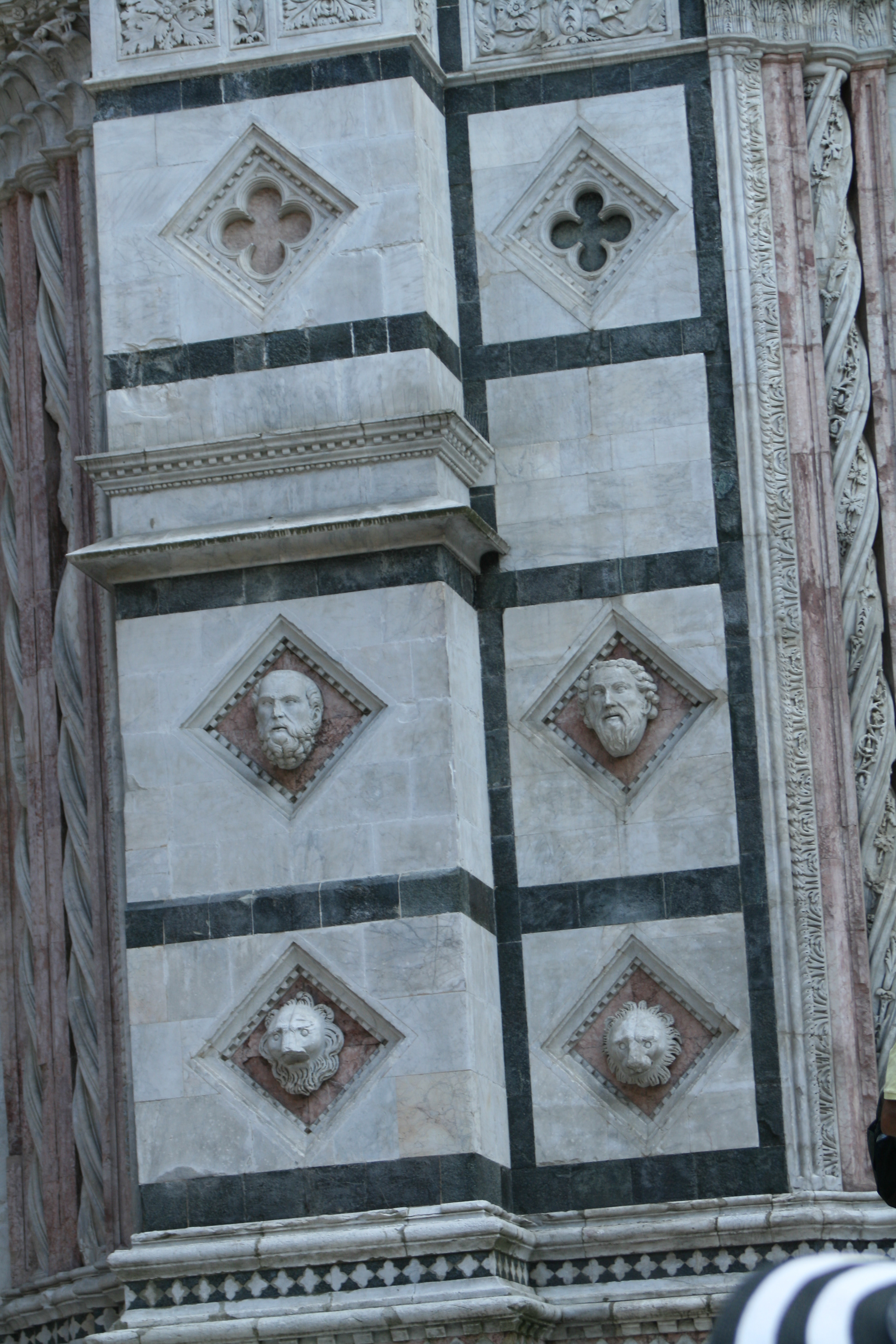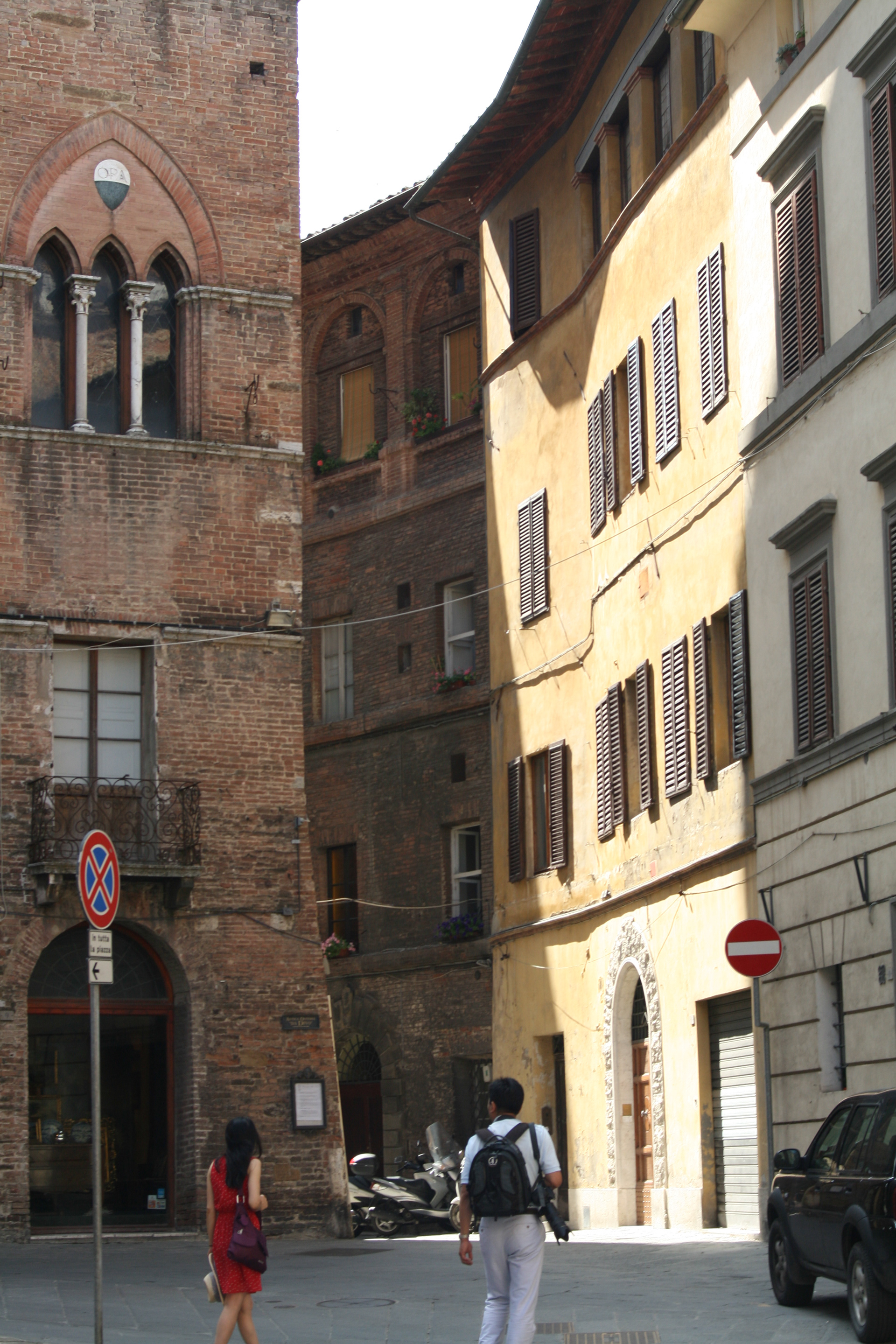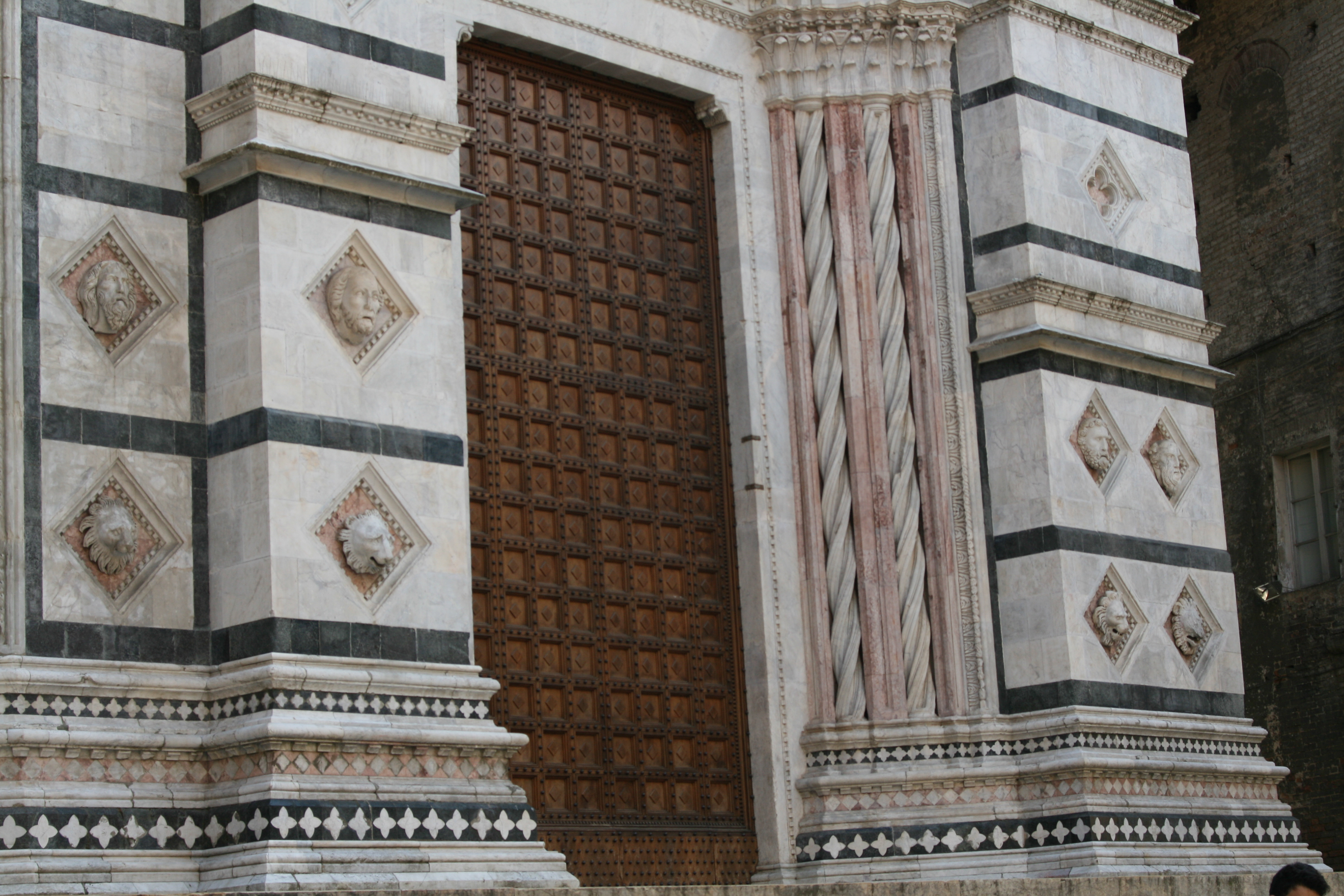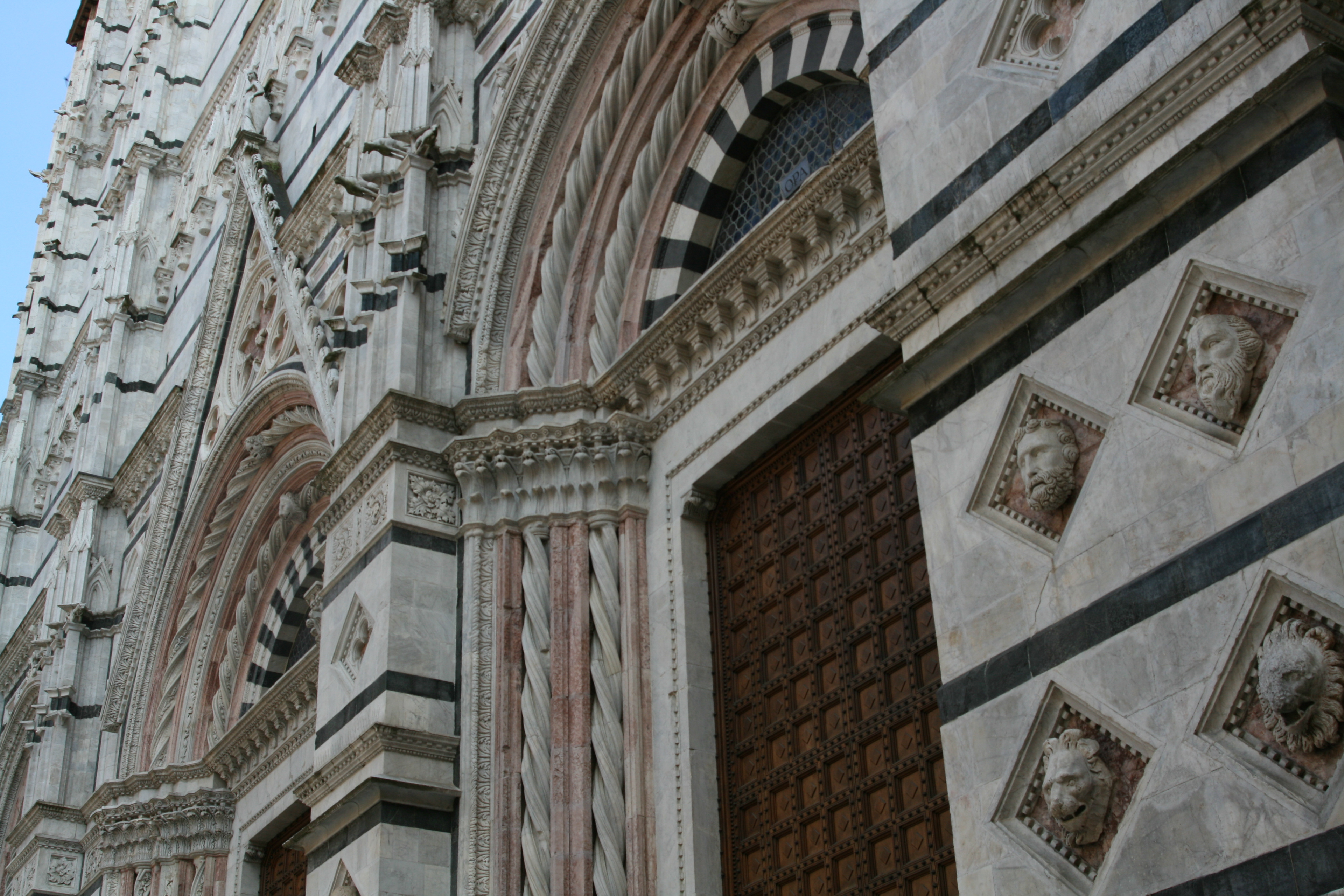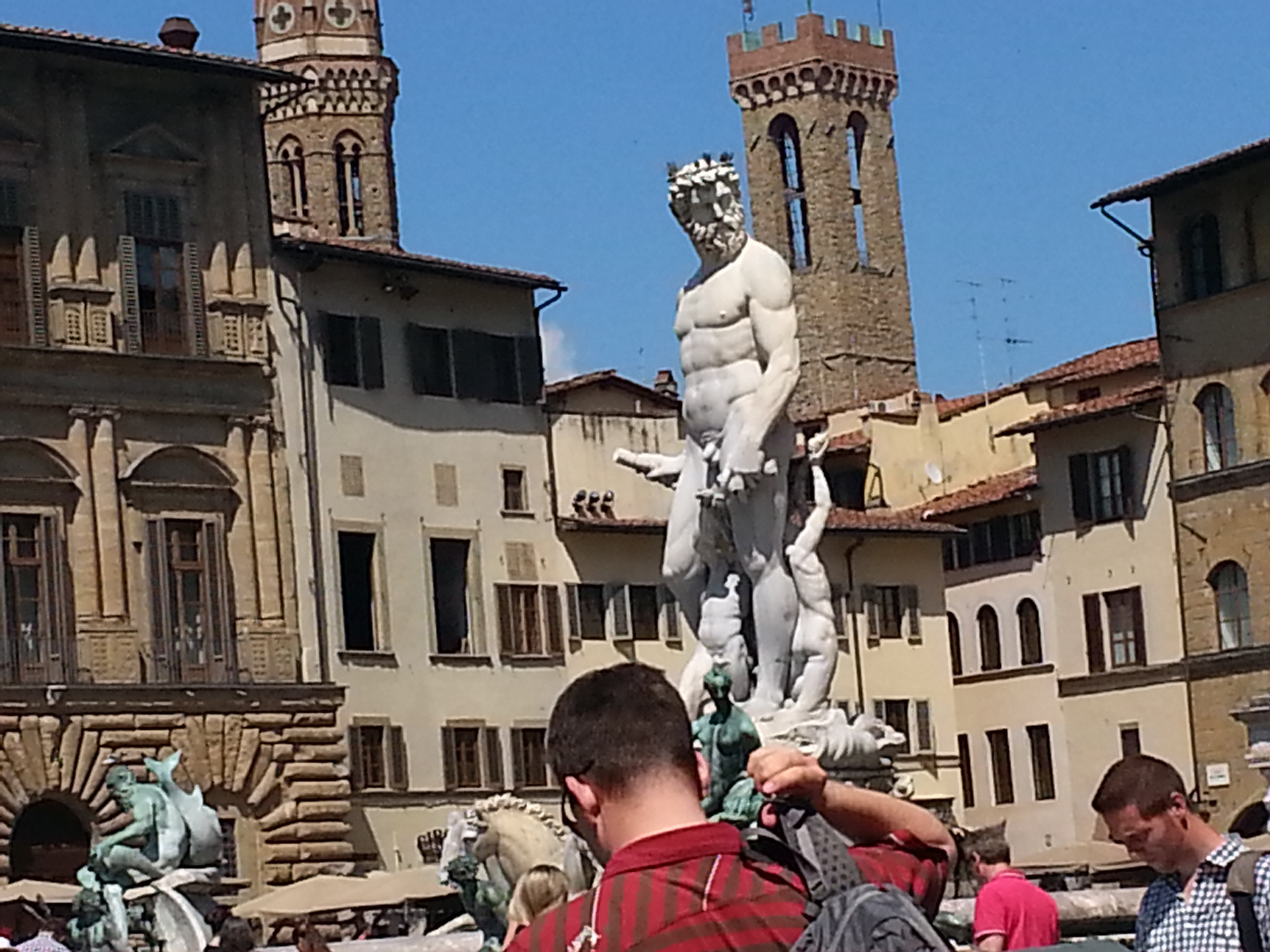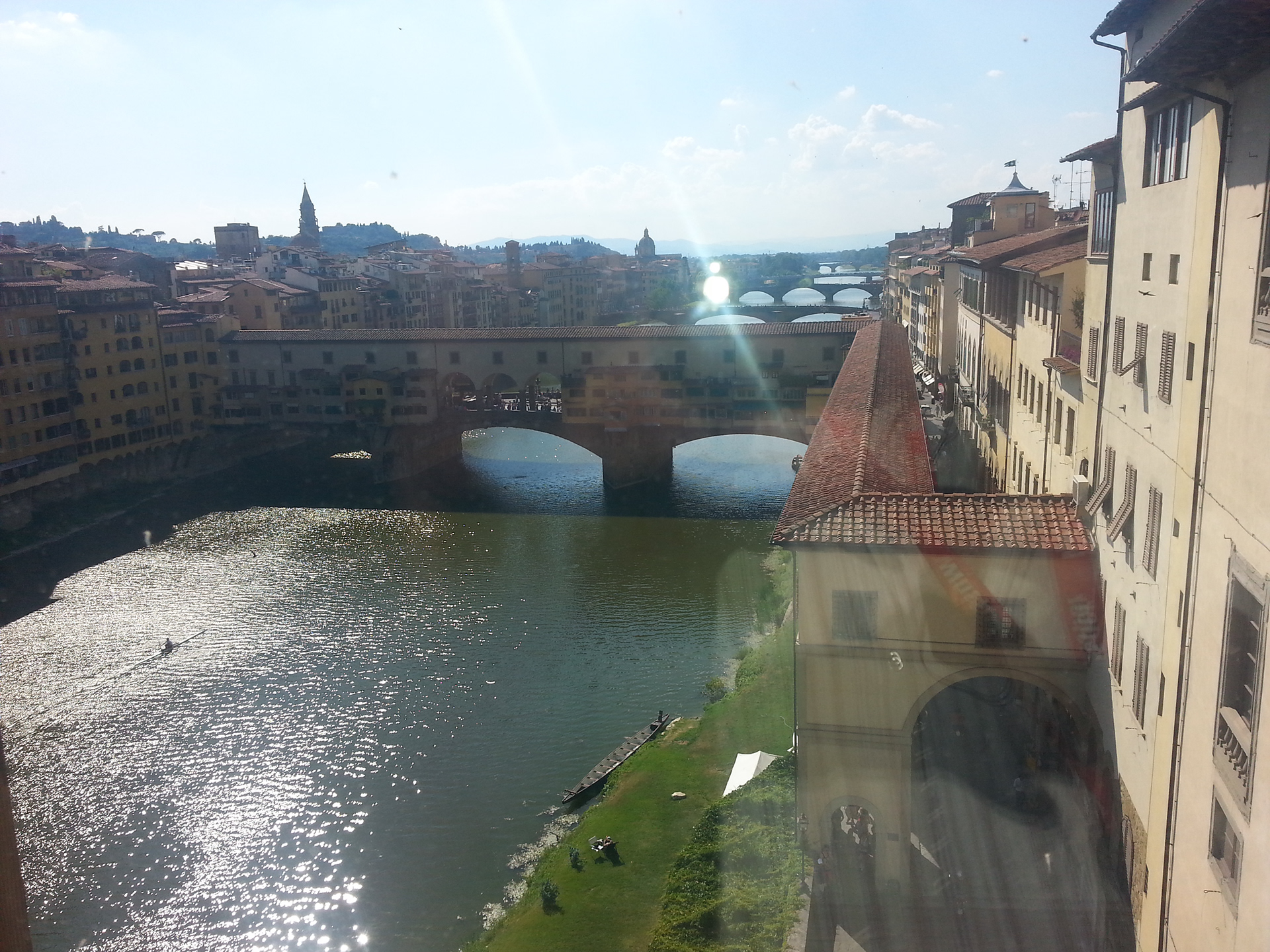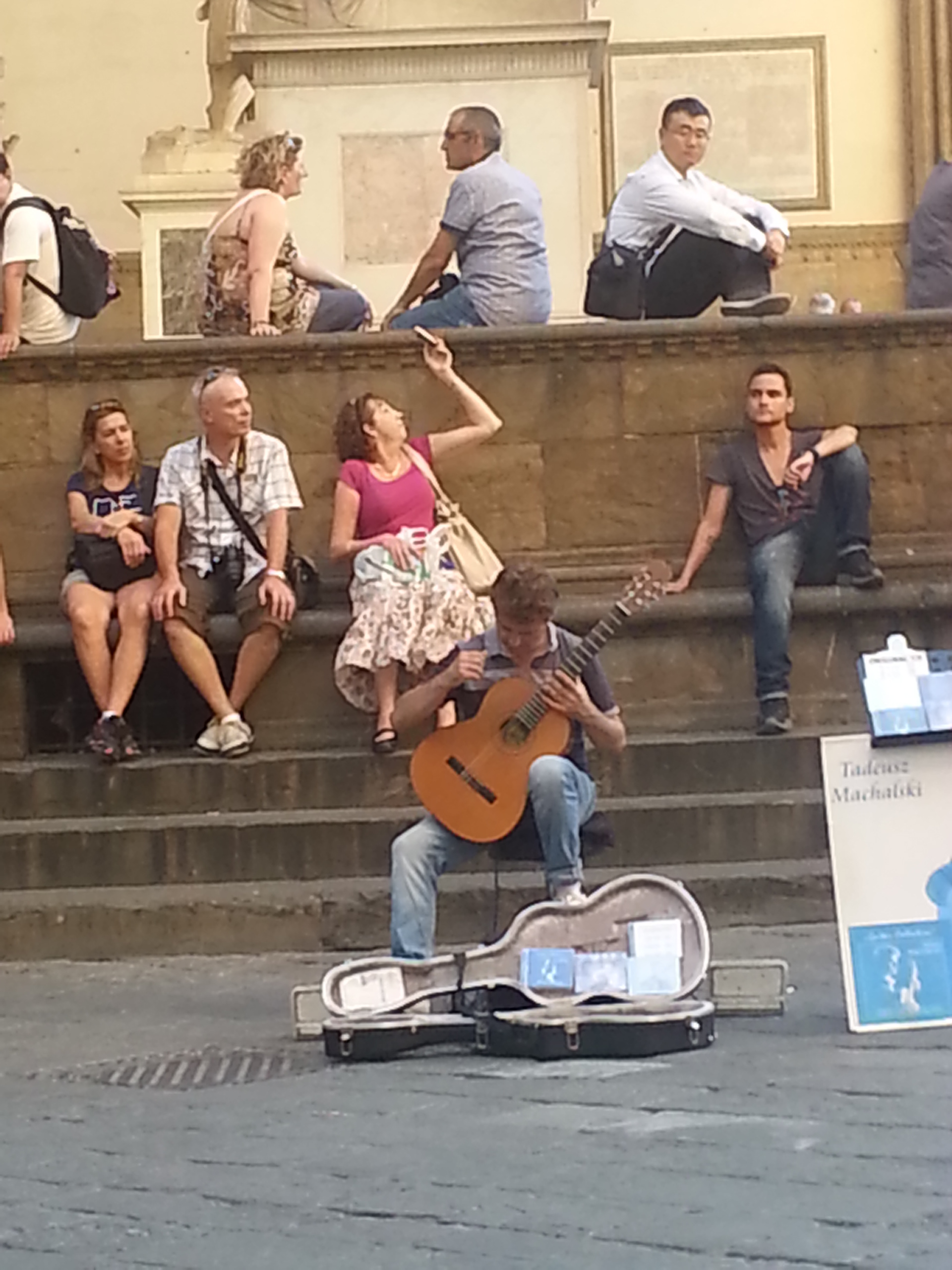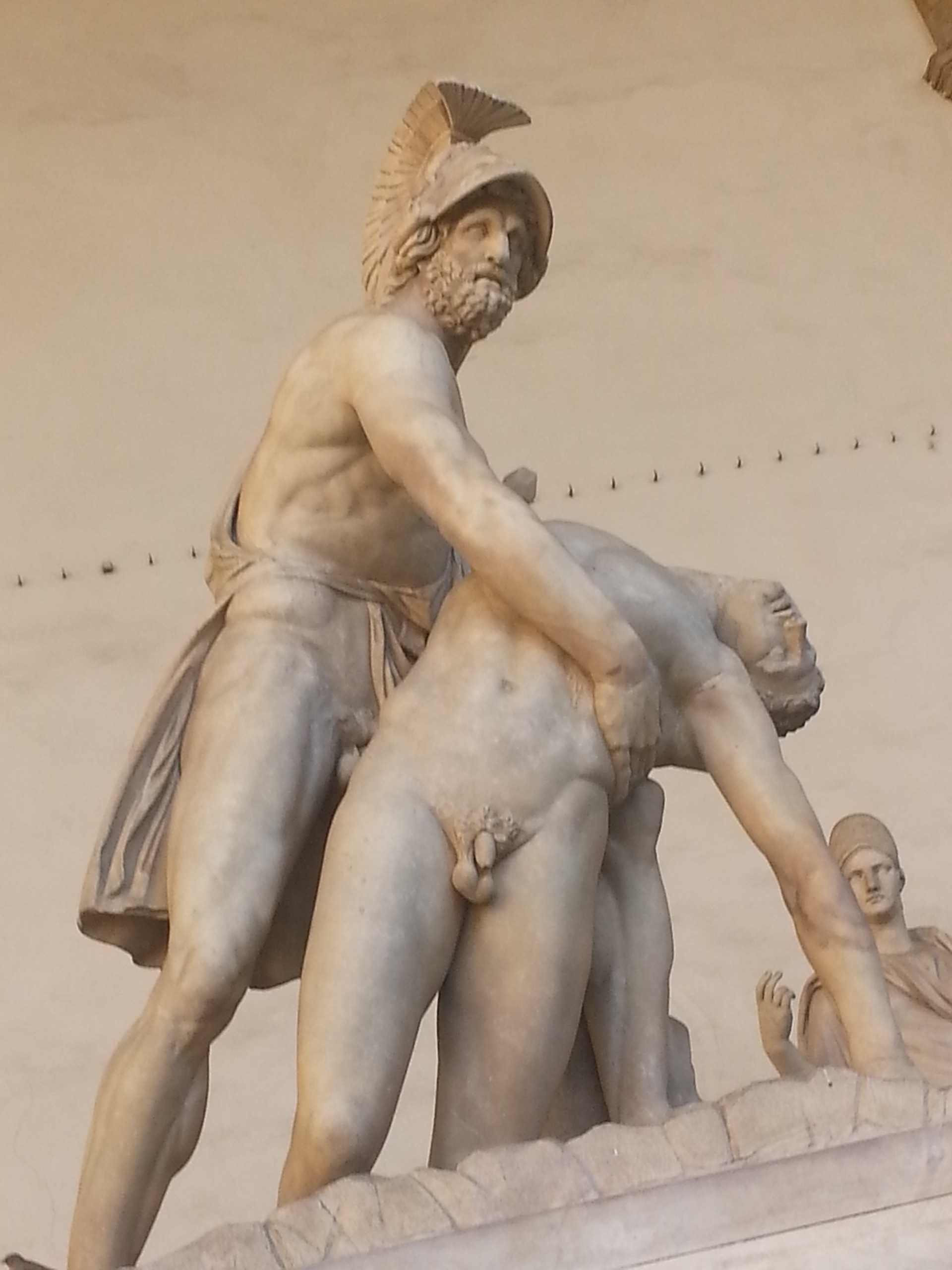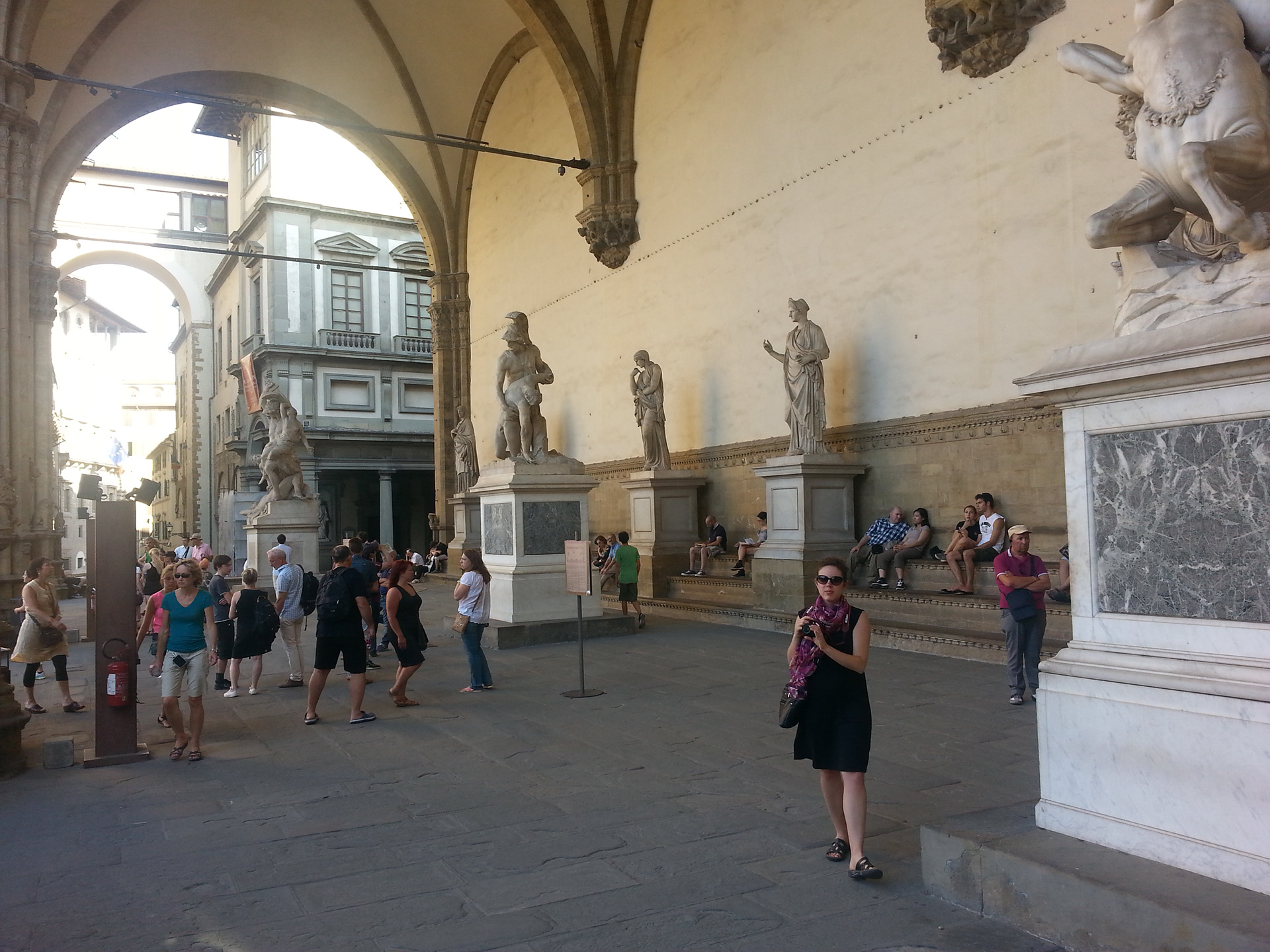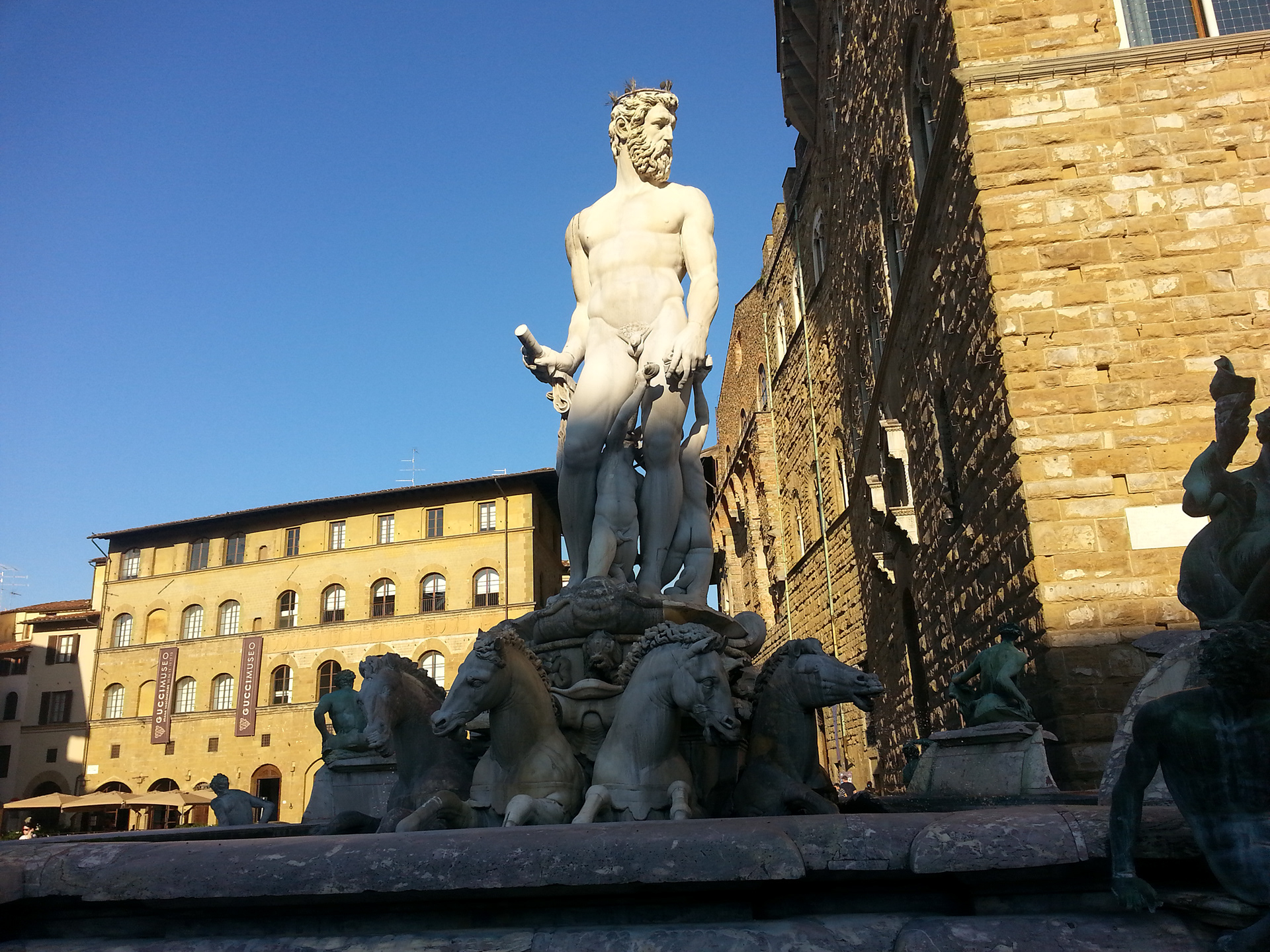
Texas A&M in the house at a Florence restaurant.

David Soileau awaits dinner at a local Florence restaurant.

Cathedral of Saint Mary of the Flower, Duomo, Cattedrale di Santa Maria del Fiore, Florence, Tuscany, Italy. It is easily identifiable by its stunning red brick cupola, designed by Filippo Brunelleschil (the largest brick dome ever constructed).

Cathedral of Saint Mary of the Flower, Duomo, Cattedrale di Santa Maria del Fiore, Florence, Tuscany, Italy.

Cathedral of Saint Mary of the Flower, Duomo, Cattedrale di Santa Maria del Fiore, Florence, Tuscany, Italy.

Adjacent to the Basilica is the towering Campanile (bell tower) designed by Giotto.

Decorative Bronze Door with murals made by Ghiberti, in Florence (Firenze), Tuscany, Italy.

Sam Luna stands in front of the Cathedral of Saint Mary of the Flower, Florence, Tuscany, Italy.

Cattedrale di Santa Maria del Fiore (Cathedral of Saint Mary of the Flower) architectural detail.

Cattedrale di Santa Maria del Fiore (Cathedral of Saint Mary of the Flower) architectural detail.

Passageway up to the Cathedral of Saint Mary of the Flower.

Cattedrale di Santa Maria del Fiore (Cathedral of Saint Mary of the Flower) architectural detail.

Cattedrale di Santa Maria del Fiore (Cathedral of Saint Mary of the Flower) architectural detail.

Passageway up to the Cathedral of Saint Mary of the Flower.

Cattedrale di Santa Maria del Fiore (Cathedral of Saint Mary of the Flower) architectural detail.

Streets of Siena. National Art Gallery of Siena on left.

Cattedrale di Santa Maria del Fiore (Cathedral of Saint Mary of the Flower) architectural detail.

Cattedrale di Santa Maria del Fiore (Cathedral of Saint Mary of the Flower) architectural detail.

David Soileau takes in the scenery at a local cafe in Florence, Italy.

David Soileau in a local cafe in Florence, Italy.

The 1299 church of San Marco was largely reconstructed, and the monastery completely rebuilt by the architect Michelozzo in the mid-15th century. Florence, Tuscany, Italy.

The Fountain of Neptune in Florence, Italy, (Italian: Fontana del Nettuno) is situated in the Piazza della Signoria (Signoria square), in front of the Palazzo Vecchio.

The roman sculpture of Menelaus supporting the body of Patroclus, Florence, Tuscany, Italy.

There are many full-sized replicas of the statue of David around the world, perhaps the most prominent being the one in the original's position in the Piazza della Signoria in Florence, Italy, placed there in 1910. the statue is just outside the entrance to the Palazzo Vecchio in Florence, Italy. The original now resides in the Uffizi Gallery.

Ponte Vecchio of Florence from the last floor of the Uffizi Gallery, the best place to appreciate the Vasari Corridor, path used by the dukes to go from the Pitti Palace to the Vecchio Palace out of danger.

Ponte Vecchio of Florence from the last floor of the Uffizi Gallery, the best place to appreciate the Vasari Corridor, path used by the dukes to go from the Pitti Palace to the Vecchio Palace out of danger.

Torre di Arnolfo - This 90+-meter tower attached to Palazzo Vecchio affords spectacular views of Florence.

Palazzo Vecchio, which was built from the end of the 1200s and was the second seat of the Florentine Republic. In 1500, following the political rise of the Medici family, who became lords and masters of Florence, the Palazzo became the residence of Grand Duke Cosimo I de Medici. Florence (Firenze), Tuscany, Italy.

View of the Santa Maria della Fiore dome from Uffizi Gallery. Florence, Italy.

Time to cool down with a nice Compare spritzer at a local sidewalk cafe in Florence, Italy.

The Vasari Corridor Bridge, Via della Nina, Florence - The Vasari Corridor (Italian: Corridoio Vasariano) is an elevated enclosed passageway in Florence, which connects the Palazzo Vecchio with the Palazzo Pitti. The bridge connects Uffizi Gallery on the right to The Palazzo Vecchio (Old Palace).

Approaching the Loggia dei Lanzi, which sits to the right of Palazzo Vecchio and functions as an open-air sculpture gallery, Florence, Italy.

The graceful Loggia dei Lanzi, which sits to the right of Palazzo Vecchio and functions as an open-air sculpture gallery, was designed by Orcagna in 1376. Its curved arches foretell Renaissance classicism.

e graceful Loggia dei Lanzi, which sits to the right of Palazzo Vecchio and functions as an open-air sculpture gallery, was designed by Orcagna in 1376. Its curved arches foretell Renaissance classicism.

A musician serenades the crowd in the Piazza della Signoria (Signoria square), in front of the Palazzo Vecchio.

There are many full-sized replicas of the statue of David around the world, perhaps the most prominent being the one in the original's position in the Piazza della Signoria in Florence, Italy, placed there in 1910. The original now resides in the Uffizi Gallery.

There are many full-sized replicas of the statue of David around the world, perhaps the most prominent being the one in the original's position in the Piazza della Signoria in Florence, Italy, placed there in 1910. The original now resides in the Uffizi Gallery.

The graceful Loggia dei Lanzi, which sits to the right of Palazzo Vecchio and functions as an open-air sculpture gallery.

The graceful Loggia dei Lanzi, which sits to the right of Palazzo Vecchio and functions as an open-air sculpture gallery.

Hercules and Cacus is an Italian Renaissance sculpture in marble to the right of the entrance of the Palazzo Vecchio in the Piazza della Signoria, Florence, Italy.

Hercules and Cacus is an Italian Renaissance sculpture in marble to the right of the entrance of the Palazzo Vecchio in the Piazza della Signoria, Florence, Italy.

Hercules and Cacus is an Italian Renaissance sculpture in marble to the right of the entrance of the Palazzo Vecchio in the Piazza della Signoria, Florence, Italy.

The statue of Perseo holding Medusa's head, by Benvenuto Cellini (1554), is a stark reminder of what happened to those who crossed the Medici.

The statue of Perseo holding Medusa's head, by Benvenuto Cellini (1554), is a stark reminder of what happened to those who crossed the Medici.

David Soileau stands in front ofthe Loggia dei Lanzi, which sits to the right of Palazzo Vecchio and functions as an open-air sculpture gallery.

Perseus Medusa Statue, Loggia dei Lanza, Piazza della Signoria, silhouetted against the Palazzo Vecchio Florence Italy. Perseus statue created 1500s by Benvenuto Cellini.

Polyxena was the daughter of King Priam and Queen Hecuba of Troy. Achilles fell in love and wished to marry her. One story relates that she helped set up his murder and another tells that he died in battle. Achilles ghost demanded Polyxena's sacrifice on his tomb. This sculpture shows the Greeks seizing her.

The Vasari Corridor Bridge, Via della Nina, Florence - The Vasari Corridor (Italian: Corridoio Vasariano) is an elevated enclosed passageway in Florence, which connects the Palazzo Vecchio with the Palazzo Pitti. The bridge connects Uffizi Gallery on the right to The Palazzo Vecchio (Old Palace).

Polyxena was the daughter of King Priam and Queen Hecuba of Troy. Achilles fell in love and wished to marry her. One story relates that she helped set up his murder and another tells that he died in battle. Achilles ghost demanded Polyxena's sacrifice on his tomb. This sculpture shows the Greeks seizing her.

The statue of Perseo holding Medusa's head, by Benvenuto Cellini (1554), is a stark reminder of what happened to those who crossed the Medici.

The roman sculpture of Menelaus supporting the body of Patroclus, Florence, Tuscany, Italy.

The roman sculpture of Menelaus supporting the body of Patroclus, Florence, Tuscany, Italy.

The roman sculpture of Menelaus supporting the body of Patroclus, Florence, Tuscany, Italy.

Heracles fighting the centaur Nessus by Giambologna (with the help of Pietro Francavilla).

Heracles fighting the centaur Nessus by Giambologna (with the help of Pietro Francavilla).

Heracles fighting the centaur Nessus by Giambologna (with the help of Pietro Francavilla).

The graceful Loggia dei Lanzi, which sits to the right of Palazzo Vecchio and functions as an open-air sculpture gallery.

Giambologna's Rape of the Sabines or Giambologna’s Abduction of a Sabine Woman is one of the most recognized works of sixteenth-century Italian art by one of the least well-known artists of the period.

Giambologna's Rape of the Sabines or Giambologna’s Abduction of a Sabine Woman is one of the most recognized works of sixteenth-century Italian art by one of the least well-known artists of the period.

Giambologna's Rape of the Sabines or Giambologna’s Abduction of a Sabine Woman is one of the most recognized works of sixteenth-century Italian art by one of the least well-known artists of the period.

The Rape (Abduction) of the Sabine Women Detail of the bas (ie low or shallow)-relief on the pedestal.

Giambologna's Rape of the Sabines or Giambologna’s Abduction of a Sabine Woman is one of the most recognized works of sixteenth-century Italian art by one of the least well-known artists of the period.

Giambologna's Rape of the Sabines or Giambologna’s Abduction of a Sabine Woman is one of the most recognized works of sixteenth-century Italian art by one of the least well-known artists of the period.

The Fountain of Neptune in Florence, Italy, (Italian: Fontana del Nettuno) is situated in the Piazza della Signoria (Signoria square), in front of the Palazzo Vecchio.

The Fountain of Neptune in Florence, Italy, (Italian: Fontana del Nettuno) is situated in the Piazza della Signoria (Signoria square), in front of the Palazzo Vecchio.

Fountain of Neptune detail

Fountain of Neptune detail

Fountain of Neptune detail

Fountain of Neptune detail

Fountain of Neptune detail

Bronze statue of a satyr, detail of Neptune Fountain in Florence, situated on the Piazza della Signoria, sculptor Bartolomeo Ammannati 1563-1565.

Bronze statue of a satyr, detail of Neptune Fountain in Florence, situated on the Piazza della Signoria, sculptor Bartolomeo Ammannati 1563-1565.

Fountain of Neptune detail

Fountain of Neptune detail

The Equestrian Monument of Cosimo I is a bronze equestrian statue executed by Giambologna from 1587 to 1594, and erected in 1594 in the Piazza della Signoria in Florence, region of Tuscany, Italy

Palazzo Vecchio

Palazzo Uguccioni is a Renaissance palace located in Piazza della Signoria in Florence, Italy.

Palazzo Uguccioni palace and restaurant, Piazza della Signoria, Florence, Italy

Palazzo Uguccioni palace and restaurant, Piazza della Signoria, Florence, Italy

Classic cars on parade.

Classic cars on parade.

Classic cars on parade.

Classic cars on parade.

Classic cars on parade.

Classic cars on parade.

Palazzo Vecchio architectural detail

Palazzo Vecchio detail

Palazzo Vecchio

View of bell tower of Badia Fiorentina from Signoria square, Florence, Italy

Piazza della Signoria

Palazzo Vecchio detail

Piazza della Signoria

The Complex of San Firenze (in Italian, Complesso di San Firenze), located in the homonymous square, is one of the few examples of Baroque architecture in the center of Florence (Italy), and the most important of the late stage of this style.

The Complex of San Firenze (in Italian, Complesso di San Firenze), located in the homonymous square, is one of the few examples of Baroque architecture in the center of Florence (Italy), and the most important of the late stage of this style.

Horse drawn carraige in the Piazza di San Firenze (Florence) in Florence, Italy

Piazza di San Firenze (Florence) in Florence, Italy

